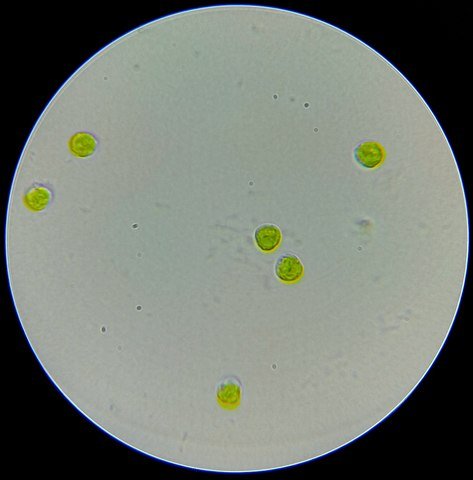
The microalgae Tetraselmis suecica is widely used in the aquaculture industry for larval cultivation, especially as live feed for fish and shrimp. T. suecica is rich in valuable components such as lipids and proteins, which are beneficial for fish and shrimp nutrition.
A team of researchers from the Department of Fisheries and the Department of Pathobiology and Quality Control investigated the effects of kinetin on the growth, photosynthetic pigment, antioxidant enzymes, and fatty acid composition of the microalgae Tetraselmis suecica.
Phytohormones
It is known that phytohormones increase the growth of microalgae primarily by stimulating cell division and intensifying photosynthetic processes, thereby increasing cell number and biomass.
The physiological functions of phytohormones have been widely studied in green algae and cyanobacteria.
Various studies have reported that the addition of cytokinins, a type of phytohormone, reduced some of the adverse effects of microalgae cultivation under conditions of nitrogen limitation and increased the growth rate and tolerance of algae under adverse environmental conditions.
Effects of the Phytohormone Kinetin
The researchers used the phytohormone kinetin at concentrations of 0, 5, 10, 15, 20, and 25 mg/L.
The study results showed differences for kinetin in cell density after day 6. They also reported that the highest cell density of microalgae on the last day was significantly achieved at concentrations of 5, 10, and 15 mg/L of kinetin compared to the control.
“According to the results, the content of photosynthetic pigments in the microalgae T. suecica, measured after 10 days, was significantly affected in the presence of kinetin,” they reported.
The highest content of chlorophyll a was significantly observed at concentrations of 20 mg/L, while the content of chlorophyll b was significantly affected by concentrations of 15, 20, and 25 mg/L of kinetin.
On the other hand, according to the study results, the activity of the enzyme catalase was significantly increased at concentrations of 5 and 25 mg/L of kinetin compared to the control.
Finally, the fatty acid profiles of the microalgae T. suecica were affected by the phytohormone kinetin at the lowest (10 mg/L) and the highest concentration (25 mg/L).
“According to our findings, the addition of exogenous phytohormones revealed differential responses in different growth phases. Until day 4 (in the lag phase) due to low cell density, there was not a significant difference; however, after that, in the mid-logarithmic phase, there was a slight decrease in cell density, probably due to oxidative stress, and then in the late logarithmic phase, it resulted in the highest activity of antioxidant enzymes,” the researchers reported.
Conclusion
The phytohormone kinetin had a promoting effect on cell density and resulted in improvements in photosynthetic pigments, antioxidant enzyme, and fatty acid composition of the microalgae Tetraselmis suecica, concludes the study.
“A concentration of 15 mg/L of phytohormone kinetin resulted in a 49% increase in cell density. Therefore, this concentration of kinetin can be used for the cultivation and biomass production of microalgae T. suecica,” they described.
Finally, the researchers concluded that a concentration of 5 mg/L of kinetin showed an increase in the activity of antioxidant enzymes such as superoxide dismutase and catalase, as well as the production of n3HUFA and saturated fatty acids compared to the control.
Contact
Nasrollah Ahmadifard
Department of Fisheries, Faculty of Natural Resources
Urmia University
Urmia, West Azerbaijan 5756151818, Iran
Email: n.ahmadifard@urmia.ac.ir
Reference (open access)
Tahereh Asghari, Nasrollah Ahmadifard, Mehdi Nikoo, “Effect of Phytohormone Kinetin on Cell Density, Photosynthetic Pigments, Antioxidant Enzymes, and Fatty Acid Composition of the Microalgae Tetraselmis suecica“, Aquaculture Research, vol. 2023, Article ID 5967771, 8 pages, 2023. https://doi.org/10.1155/2023/5967771

